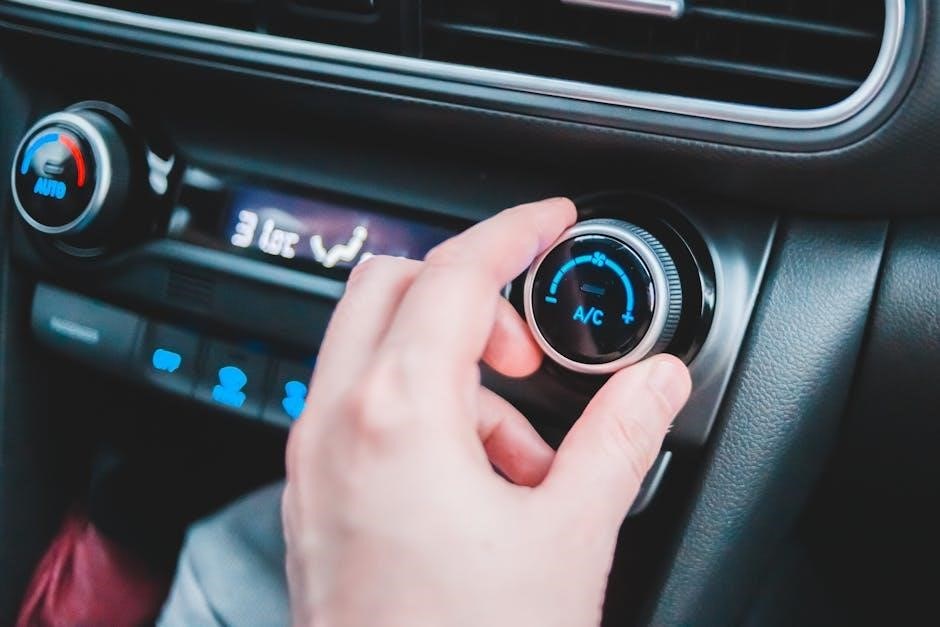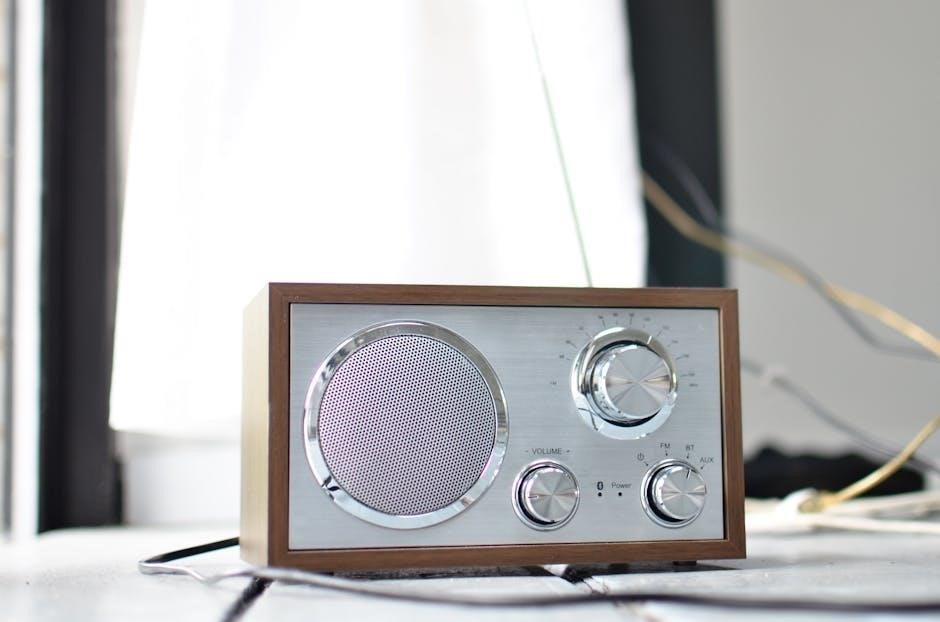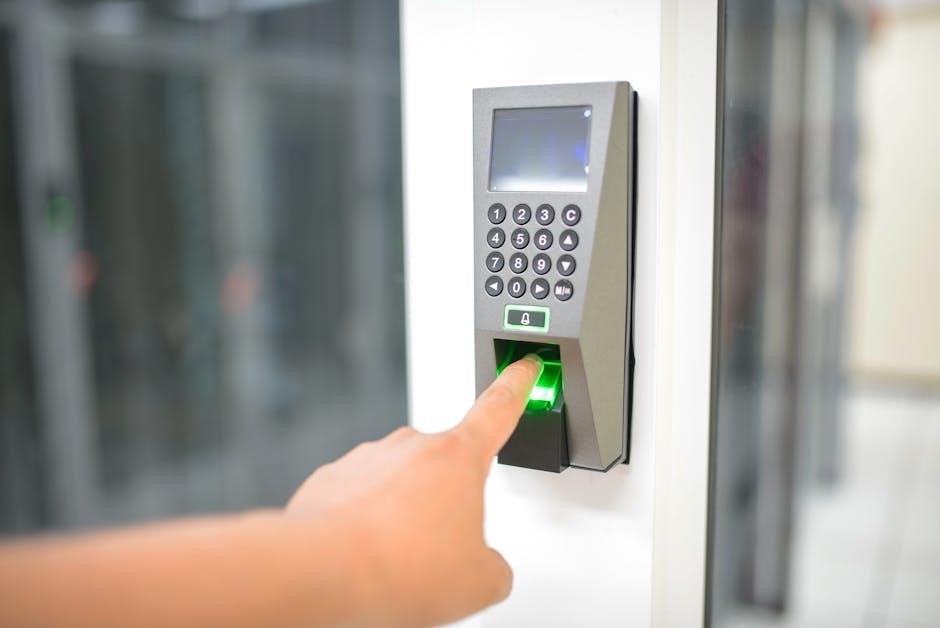
horizontal stabilizer trim system failure pdf
The horizontal stabilizer trim system is crucial for maintaining aircraft pitch control and stability during flight. Recent incidents, like the Mango flight investigation, highlight its critical role in safety and performance, necessitating thorough inspections and maintenance as mandated by aviation authorities.
1.1 Overview of the Horizontal Stabilizer Trim System
The horizontal stabilizer trim system is a critical component of an aircraft’s flight control system, designed to maintain pitch stability and reduce pilot workload. It operates by adjusting the angle of the horizontal stabilizer to counteract forces acting on the aircraft during flight. This system ensures smooth transitions between different flight phases, such as takeoff, climb, cruise, and landing. Recent investigations, like the Mango flight incident, have highlighted the importance of this system’s reliability. The trim system integrates mechanical, electrical, and software components to function seamlessly. Its failure can lead to significant challenges in maintaining controlled flight, emphasizing the need for rigorous inspections and maintenance protocols as mandated by aviation authorities like the FAA.

1.2 Importance of the Trim System in Aircraft Stability
The horizontal stabilizer trim system plays a vital role in maintaining aircraft stability by adjusting the pitch attitude, ensuring efficient flight operations. Its failure, as seen in incidents like the Mango flight, can lead to significant control challenges. The system reduces pilot workload by automating pitch adjustments, allowing for smoother transitions between flight phases. Proper functionality ensures the aircraft remains stable under varying conditions, such as changes in speed or load. Regulatory bodies like the FAA emphasize its critical role, mandating inspections to prevent failures. The trim system’s reliability directly impacts flight safety, making it essential for maintaining controlled and efficient aircraft performance during all flight stages.
Components of the Horizontal Stabilizer Trim System
The horizontal stabilizer trim system comprises a trim motor, actuators, and control units, essential for adjusting aircraft pitch and maintaining stability during flight operations effectively.
2.1 Key Components and Their Functions
The horizontal stabilizer trim system includes a trim motor, actuators, and control units. The trim motor powers the system, adjusting the stabilizer’s angle to maintain pitch control. Actuators convert motor rotation into linear motion, moving the stabilizer. Control units manage inputs from the cockpit, ensuring precise adjustments. These components work together to optimize aircraft stability and pilot control during various flight conditions. Their proper functioning is vital for safe and efficient flight operations, as highlighted by recent investigations into system failures, emphasizing the need for regular inspections and maintenance to prevent malfunctions.
2.2 Interaction Between Trim Motors and Actuators
The trim motor and actuators work in tandem to adjust the horizontal stabilizer’s angle, ensuring precise pitch control. The motor generates torque, which the actuators convert into linear motion, moving the stabilizer. This interaction is critical for maintaining aircraft stability during flight. Failures in this interaction, such as those noted in the Mango flight incident, can lead to loss of control. Regular inspections and maintenance, as mandated by the FAA for Boeing 737s, are essential to prevent such malfunctions. Proper synchronization between these components ensures smooth operation, while any disruption can compromise safety, highlighting the need for rigorous oversight and adherence to regulatory guidelines.


Causes of Horizontal Stabilizer Trim System Failure
Failures often stem from mechanical wear, electrical issues, or software glitches. The Mango incident highlighted faulty trim motors, while FAA inspections revealed lubrication and maintenance lapses as key factors.
3.1 Mechanical Failures and Wear and Tear

Mechanical failures in the horizontal stabilizer trim system often result from wear and tear on components like actuators and motors. Over time, these parts can degrade due to repetitive use, leading to reduced system performance. The Mango flight incident highlighted a failed trim motor, which underscored the importance of regular inspections. Additionally, improper lubrication and maintenance lapses, as identified by the FAA, can exacerbate mechanical issues. Such failures can disrupt pitch control, making it difficult for pilots to maintain stable flight. Addressing these mechanical challenges requires rigorous maintenance protocols and timely repairs to ensure the system’s reliability and safety during operation.
3.2 Electrical and Software-Related Issues
Electrical and software-related issues are significant contributors to horizontal stabilizer trim system failures. Faulty sensors, wiring malfunctions, or software glitches can disrupt the system’s ability to function correctly. For instance, incorrect signals from angle-of-attack sensors can lead to erroneous trim commands, as highlighted in recent investigations. Additionally, software bugs or outdated systems may fail to respond appropriately to pilot inputs, further complicating flight control. The FAA has emphasized the need for repetitive inspections and updates to address these issues. Such failures underscore the importance of robust electrical systems and reliable software to ensure the trim system operates seamlessly, maintaining aircraft stability and safety during flight.

Effects of Trim System Failure on Aircraft Performance
Trim system failure significantly impacts aircraft performance by compromising pitch control and stability, increasing pilot workload during critical flight phases and requiring immediate crew response.
4.1 Impact on Pitch Control and Stability
A failure of the horizontal stabilizer trim system disrupts pitch control, making it difficult for pilots to maintain stable flight. This can lead to unpredictable nose-up or nose-down movements, reducing aerodynamic efficiency and increasing drag. The loss of trim functionality forces pilots to apply constant pressure on the controls, complicating overall aircraft management. Such instability can result in altitude deviations and potentially dangerous flight scenarios. The Mango flight incident highlighted how trim system malfunctions can escalate quickly, underscoring the need for robust maintenance and inspection protocols as mandated by aviation authorities. Effective pitch control is essential for safe flight operations, making the reliability of the trim system paramount.
4.2 Increased Workload on Flight Crews
A failure of the horizontal stabilizer trim system significantly increases the workload on flight crews, as pilots must manually compensate for the loss of automated pitch control. This requires constant attention and physical effort to maintain stable flight, diverting focus from other critical tasks. The Mango flight incident exemplified how such failures demand rapid decision-making and precise adjustments, heightening stress levels. Additionally, crews must communicate with air traffic control to address altitude deviations, further intensifying workload. The FAA has emphasized the need for enhanced training and additional angle-of-attack indicators to mitigate these challenges. The physical and mental strain on pilots underscores the importance of reliable trim systems to ensure safe and efficient flight operations.
Case Studies of Trim System Failures
The Mango flight incident highlights a critical trim system failure under investigation by the South African Civil Aviation Authority, while other incidents underscore recurring issues in aircraft stability.
5.1 The Mango Flight Incident Investigation
The Mango flight incident has drawn significant attention due to a reported failure of the horizontal stabilizer trim motor. The South African Civil Aviation Authority is investigating the origin of the faulty component, which caused unexpected behavior during flight. This incident underscores the critical role of trim systems in maintaining pitch control and stability. Preliminary findings suggest that the failure led to challenges in managing the aircraft’s attitude, prompting emergency procedures. The investigation highlights the importance of rigorous inspections and maintenance protocols to prevent such occurrences. Regulatory bodies, including the FAA, have emphasized the need for repetitive inspections and lubrications of trim systems across various aircraft models to ensure safety. This case serves as a reminder of the potential consequences of trim system malfunctions and the necessity for robust pilot training in handling such emergencies.
5.2 Other Notable Incidents Involving Trim System Failures
Beyond the Mango flight, other incidents have highlighted the vulnerabilities of horizontal stabilizer trim systems. For instance, the FAA has recently mandated repetitive inspections and maintenance for Boeing 737s due to trim system concerns. These measures aim to prevent failures that could lead to loss of pitch control. Additionally, investigations into certain aircraft incidents have revealed issues with manual trimming capabilities during emergencies, prompting calls for enhanced pilot training. These cases emphasize the importance of proactive maintenance and crew preparedness. Regulatory bodies worldwide are now prioritizing inspections and software updates to address these risks. Such incidents underscore the critical need for robust safety protocols to mitigate trim system failures and ensure flight safety.
Detection and Diagnosis of Trim System Failures
Early detection involves monitoring system performance and identifying anomalies. Advanced diagnostic tools and regular inspections help pinpoint issues before they escalate. Adherence to regulatory guidelines ensures reliability.
6.1 Early Warning Signs and Indicators
Pilots should be vigilant for unusual trim system behavior, such as erratic pitch movements or uncommanded trim activations. Warning lights on the cockpit panel and audible alerts are critical indicators. Maintenance crews must monitor for signs of mechanical wear, like excessive play in trim components or electrical malfunctions. Logbook entries and flight data recorder analysis can reveal recurring issues. Regular inspections, as mandated by the FAA, help identify potential failures before they become critical. Early detection ensures timely interventions, preventing incidents like the Mango flight malfunction. Proactive monitoring and adherence to maintenance schedules are essential for safety.
6.2 Advanced Diagnostic Techniques and Tools
Modern diagnostic tools, such as flight data analysis software and vibration sensors, enable early detection of trim system anomalies. Automated testing systems can simulate flight conditions to identify malfunctions. Advanced algorithms analyze data from sensors to predict potential failures before they occur. Regulatory guidelines, like those from the FAA, emphasize the use of non-destructive testing for critical components. Real-time monitoring systems provide instant feedback on trim motor performance and electrical health. These tools, combined with detailed maintenance logs, help technicians pinpoint issues quickly. For instance, the investigation into the Mango flight incident relied on such advanced diagnostics to trace the root cause of the trim motor failure. These technologies are essential for ensuring the reliability and safety of the horizontal stabilizer trim system.
Emergency Procedures for Trim System Failures
Notify air traffic control, isolate the trim system, and follow specific protocols for manual operations or alternative landing procedures to ensure safety during failures.
7.1 Pilot Training and Response Protocols
Pilot training emphasizes early recognition of trim system failures through simulator exercises and real-time scenario drills. Protocols include immediate notification of air traffic control, isolating the faulty system, and transitioning to manual trim operations if necessary. Crew resource management techniques are critical to ensure clear communication and coordinated actions. Training programs also focus on understanding the aircraft’s behavior during trim malfunctions, such as uncommanded pitch movements, and applying corrective measures swiftly. Regular recurrent training is mandated to maintain proficiency in handling such emergencies. These protocols are designed to minimize risks and ensure safe outcomes, aligning with regulatory guidelines and industry best practices for emergency procedures.
7.2 Manual Trim Operations in Emergency Situations

Manual trim operations are critical during horizontal stabilizer trim system failures, requiring pilots to adjust the aircraft’s pitch manually. This involves using the trim wheel or alternate mechanisms to counteract uncommanded movements. Crews must coordinate effectively, with one pilot flying the aircraft while the other handles the trim. The process is physically demanding and time-consuming, especially at high altitudes or speeds. Training emphasizes smooth, incremental adjustments to avoid overcorrection. In some cases, such as the Mango flight incident, manual trim proved challenging due to the aircraft’s aerodynamic conditions. Regulatory guidelines, like those from the FAA, stress the importance of proficiency in these procedures to ensure safe outcomes during emergencies.

Regulatory Responses and Safety Directives
Regulatory bodies like the FAA have mandated repetitive inspections and maintenance for horizontal stabilizer trim systems. Investigations, such as the Mango flight incident, drive these safety directives.
8.1 FAA Guidelines for Inspections and Maintenance
The FAA has issued specific guidelines for inspections and maintenance of horizontal stabilizer trim systems to ensure safety and prevent failures. These directives include repetitive inspections, lubrications, and overhauls of critical components. Operators are required to adhere to these protocols to maintain aircraft airworthiness. The guidelines emphasize early detection of wear and tear, electrical issues, and software malfunctions. Regular maintenance intervals are specified to address potential risks proactively. Compliance with these standards is mandatory, and non-adherence can lead to enforcement actions. The FAA also recommends operators to stay updated with the latest service bulletins and advisories related to trim systems. These measures aim to enhance safety and reduce the likelihood of in-flight trim system failures.

8.2 International Aviation Authority Recommendations
International aviation authorities have issued comprehensive recommendations to address horizontal stabilizer trim system failures. These guidelines emphasize enhanced inspection protocols, improved maintenance practices, and the adoption of advanced diagnostic tools; Authorities recommend regular checks for mechanical wear, electrical connectivity, and software integrity. They also advocate for pilot training programs focused on handling trim system malfunctions. Collaboration between global aviation bodies ensures standardized safety measures. These recommendations are designed to minimize risks and improve overall aircraft performance. By aligning with these international standards, operators can ensure compliance and enhance safety across diverse aviation jurisdictions. The focus is on proactive maintenance and continuous improvement in trim system reliability.
Maintenance and Repair of the Trim System
Regular inspections, lubrications, and overhauls of the horizontal stabilizer trim system are essential to prevent failures. The FAA mandates repetitive checks to ensure optimal functionality and safety.
9.1 Routine Maintenance Practices
Routine maintenance for the horizontal stabilizer trim system involves regular inspections of motors, actuators, and electrical connections. Lubrication of moving parts and software updates are also critical. The FAA recommends repetitive checks to ensure system reliability, as highlighted in recent directives following incidents like the Mango flight. Technicians must adhere to strict guidelines to prevent wear and tear, which can lead to mechanical failures. Early detection of issues through these practices minimizes the risk of system malfunction during flight, ensuring aircraft stability and safety. Proper documentation and compliance with regulatory standards are essential for effective maintenance protocols.
9.2 Repair and Overhaul Procedures
Repair and overhaul of the horizontal stabilizer trim system require meticulous attention to detail to ensure optimal functionality. Damaged or worn components, such as motors and actuators, must be replaced or refurbished according to manufacturer specifications. Technicians conduct thorough inspections, including electrical and mechanical testing, to identify and address potential issues. The FAA has emphasized the importance of adhering to repetitive inspection and overhaul schedules, as highlighted in recent directives. Proper repair protocols not only restore system performance but also prevent future failures. Documentation of all procedures is critical for compliance and safety. Regular overhauls ensure the system remains reliable, minimizing risks during flight operations and maintaining aircraft stability.

Advances in Trim System Technology
Modern advancements integrate automation and AI, enhancing trim system efficiency and reliability. Materials and designs have improved, reducing failure risks. The Mango incident highlights the need for robust systems.
10.1 Modern Materials and Design Improvements
Recent advancements in materials and design have significantly enhanced the reliability of horizontal stabilizer trim systems. Lightweight, high-strength composites and alloys are now being utilized to improve durability and reduce weight. These materials are more resistant to fatigue and environmental stress, minimizing the risk of mechanical failure. Additionally, innovative designs incorporate redundancy in actuation systems, ensuring continued functionality even if one component fails. Aerodynamic optimizations have also been introduced to reduce the physical load on the trim system, further improving its efficiency. These improvements are critical in addressing the issues highlighted by incidents like the Mango flight investigation, where material integrity played a key role. By integrating advanced materials and designs, manufacturers aim to enhance safety and performance, aligning with stringent regulatory guidelines.
10.2 Integration of Automation and AI in Trim Systems
The integration of automation and AI into horizontal stabilizer trim systems represents a significant leap forward in aircraft technology. Modern systems now incorporate predictive maintenance algorithms that analyze real-time data to detect potential failures before they occur. AI-driven systems can automatically adjust trim settings to optimize aircraft performance, reducing pilot workload. These advancements also enable more precise control during flight, enhancing stability and responsiveness. The use of machine learning allows the system to adapt to various flight conditions, improving reliability. Such innovations address concerns highlighted by incidents like the Mango flight investigation, where automation could have mitigated issues. Regulatory bodies, including the FAA, are encouraging the adoption of these technologies to enhance safety and efficiency, ensuring that trim systems operate seamlessly in all scenarios.